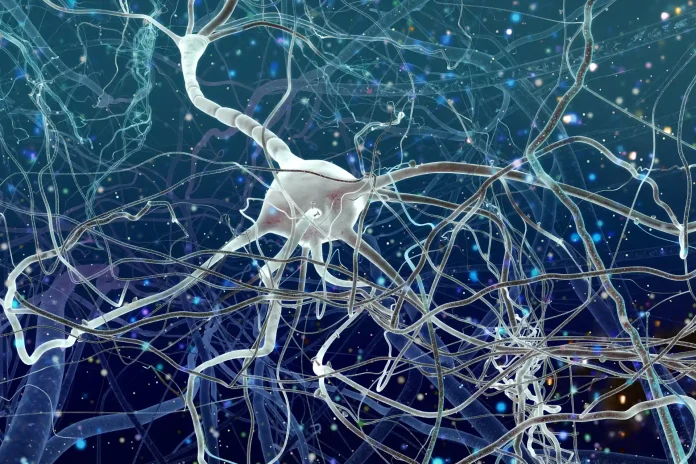Deep within the delicate structure of our brains, billions of neurons dance in a synchronized ballet, unfolding a bundle of thoughts, memories, and actions known as brain cell connectivity. But how do these tiny cells know where to connect and form the circuits that control our every perception and movement in the body? Until recently, this remained a complex puzzle covered in the mysteries of biology.
A Glimpse Through the Microscope
A new study published in the well-known journal Nature Physics opens a window into this hidden world for researchers. A team of physicists and neuroscientists from the University of Chicago, Harvard, and Yale has discovered a surprisingly simple model that explains how neurons organize and connect. This model, based on fundamental networking and self-organization principles, exceeds individual organisms’ limits and sheds light on a universal language of brain wiring and brain cell connectivity.
Heavy Tails and Hebbian Learning
Imagine a big and busy city where a few major highways carry the majority of traffic. Our brains, it turns out, operate on a similar principle. While neurons form countless connections, a small number of “heavy-tailed” connections, much stronger than most, act as the information superhighways of our minds. These connections, it was believed, emerged from organism-specific biological processes.
The researchers, however, challenged this assumption. They analyzed detailed brain cell connectivity (connectomes) maps from diverse organisms like fruit flies, roundworms, and mice. Applying a model inspired by Hebbian learning, which hypothesized that “neurons that fire together, wire together,” they discovered a remarkable truth: the “heavy-tailed” distribution of connections emerged not from specific biology but from the movement of activation and the connection itself.
“It’s like watching a network grow organically,” explains Stephanie Palmer, senior author of the study. “Hebbian dynamics, combined with a bit of randomness, weave this intricate tapestry of strong and weak connections, mimicking the patterns we see across different brains.”
Research Beyond Brain Cell Connectivity
The model’s reach extends far beyond the confines of the skull. The researchers found that the same network organization principles apply to non-biological networks, like social interactions. Just as friends of friends are more likely to become friends themselves, neurons form clusters via shared connections, creating a web of interconnectedness that transcends individual cells.
The Prospect Future Research
This new discovery of working brain cell connectivity paves the way for a deeper understanding of brain function and opens doors to exciting new ventures. “Imagine using this model to predict how brain circuits change in learning or disease,” enthuses Caroline Holmes, a postdoctoral researcher on the team. “We can even explore its application in engineering artificial networks that mimic the brain’s efficiency and adaptability.”
While the journey to fully unlock the brain’s secrets is far from over, this simple model of examining brain cell connectivity marks a significant step towards a scientifically bright future. It illuminates the elegant dance of neurons, revealing a universal language of cell connectivity that may hold the key to decoding the complexities of thought, memory, and consciousness. With continued research and innovation, we can move closer to understanding the magnificent balance of neurons that plays within our very heads.



